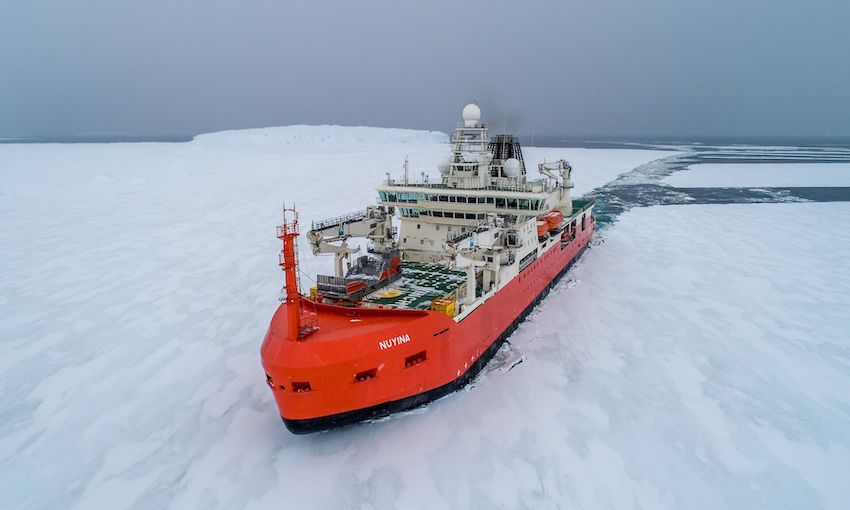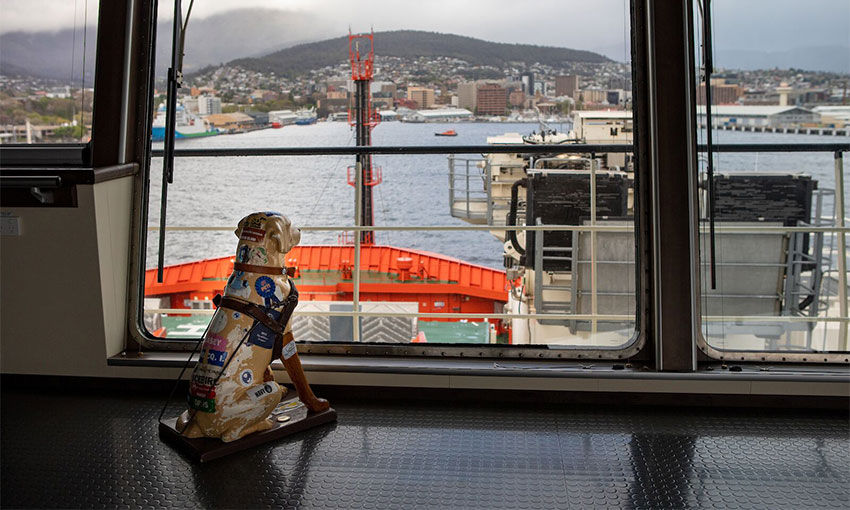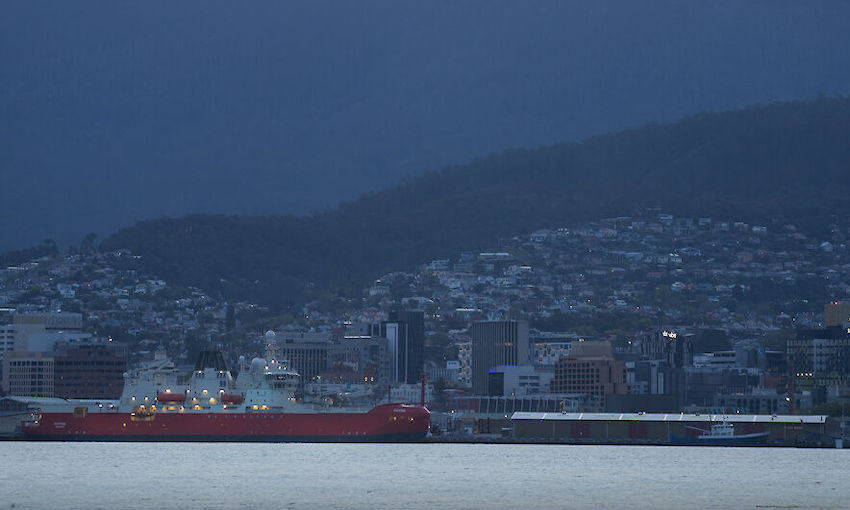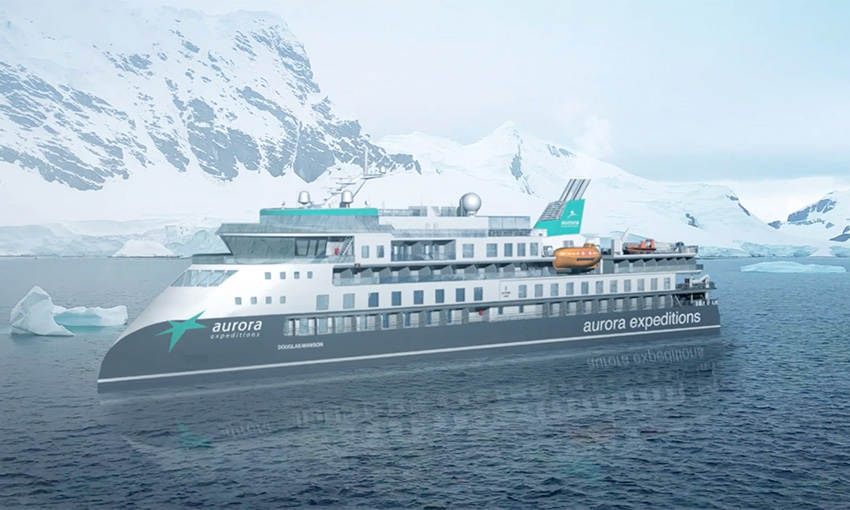AUSTRALIAN icebreaker RSV Nuyina has returned to Hobart following its successful maiden voyage to Antarctica.
The 39-day voyage was one of the biggest annual station resupplies ever undertaken by the Australian Antarctic Program.
Sailing more than 13,000 kilometres to Davis and Casey research stations, Australian Antarctic Division personnel tested the ship’s scientific systems and its ability to meet Antarctic resupply challenges.
The tests aligned with a commissioning process with the ship’s operator Serco Australia to prepare the vessel for the next 30 years of operation. The outcome was a series of “firsts” for the ship.
Nuyina encountered the first of many icebergs, broke its first fast ice, visited its first glacier, refuelled its first station, and supported its first helicopter operations.
Australian Antarctic Division leader Lloyd Symons said the voyage had been a great success.
“Our main priority was to deliver almost one million litres of fuel to Casey research station, to enable the station to continue its important work for another year,” he said.
“With teams working in shifts from Nuyina, the resupply ship Happy Dragon, and the station, we delivered the fuel in less than 36 hours.”
Happy Dragon is a Dutch-flagged ice-strengthened heavy cargo vessel, one of two chartered vessels supporting Nuyina during the commissioning.
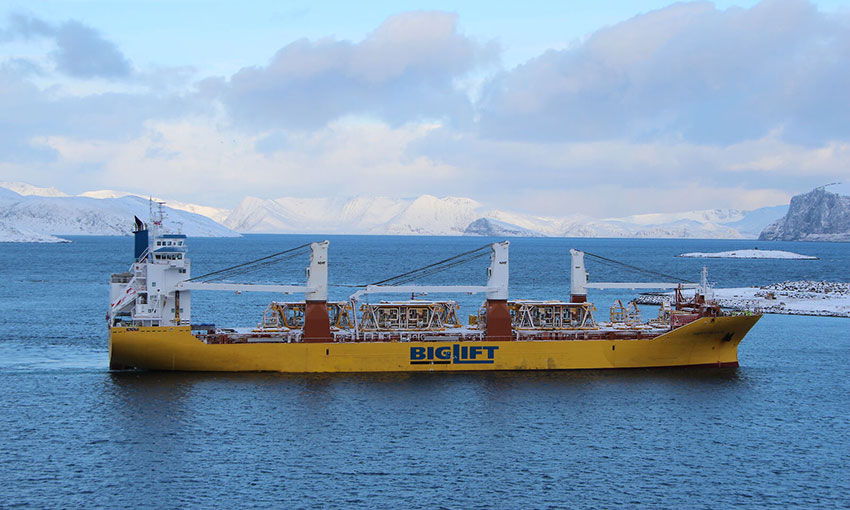
“We also successfully delivered two helicopters and their crew to Davis research station, and conducted a range of marine science commissioning tasks, including deployments of scientific equipment off the trawl deck and through the moon pool.”
During the voyage, Nuyina mapped the summit of an underwater mountain higher than Mount Kosciuszko and discovered a glacial canyon more than 2200 metres deep.
“Although we’ve been visiting this region for decades, we haven’t had the capability to do this sort of detailed mapping before,” senior acoustics officer Mr Floyd Howard said.
“It’s a privilege to be able to set up these instruments and ensure that they’re operating correctly, and calibrated, so that we have a future facility for Australian marine science.”
The Nuyina team also conducted the first deployment of an oceanographic instrument through the ship’s moon pool, which enables the deployment of equipment, nets, and robotic vehicles into the ocean.
Technical services manager Michael Santarossa oversaw the deployment of the first conductivity, temperature, and depth instrument to sample water at the bottom of the ocean.
“Antarctic scientists are pretty keen to sample Antarctic Bottom Water that’s normally found, as the name suggests, close to the bottom, so you have to test your nerve a bit and lower the package pretty close,” he said.
“On this voyage I’m here to confirm that our equipment is going to serve the scientists that will be using this vessel over the next 30 years.”
In the future, many oceanographic deployments will be hooked up to a new deep-sea power and data system developed by Australian Antarctic Division engineers.
The Nuyina Underwater Towed Termination System is designed to provide a connection between the instruments and electrical-optical cables that can lower instruments up to 8000 metres deep.
“NUTTS will allow us to send one kilowatt of power to underwater systems, and we can use the fibre-optic lines in the tow cable to get more data up the cable than was possible in the past,” an engineer said.
“This means we’ll be able to receive multiple 4K video streams at once as well as tonnes of data from sensors like altimeters, sonars, or sensors on oceanographic instruments, all in one go.”
All the data collected by NUTTS and the huge number of sensors on the ship is stored in an advanced, portable data storage system.
The data collected during the voyage will contribute to improved weather and climate models, biodiversity models, navigation maps, and global efforts to map the world’s oceans by 2030.
Australian Antarctic Data Centre manager Dr Johnathan Kool said the findings will be valuable to a broad range of people and hopes to share them with the public.
“In time, my vision is that we can open up our entire Australian Antarctic data collection for big data research,” he said.
Voyage leader Mr Symons described the ambition as a fitting beginning for Nuyina.
“Bringing Nuyina and its large array of complicated and advanced systems into service is a really important step forward for understanding the Antarctic and Southern Ocean region and advancing Australia’s interests there,” he said.

